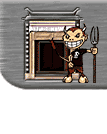|
Hyperactive Student
Technique: Many students are fidgety in adolescence.
Attention deficit disorder is commonly diagnosed prior to adolescence
with inattention and impulsivity as primary characteristics rather than
lack of motor stillness.
Procedures:
Look for many of the following characteristics. They must be pervasive
enough that they impair ability to learn. They may also inhibit the student‚s
ability to maintain relationships with peers:
- Lack of attention to detail
- Frequent careless mistakes
- Difficulty sustaining attention, including inability to stay focused
with tv
- Does not listen, even when specifically addressed
- Does not follow tasks through to completion (pervasive)
- Has difficulty organizing tasks and activities
- Avoids tasks which call for sustained mental effort
- Loses materials (pencil, books, assignments, outline, etc.)
- Distracted by small extraneous stimuli
- Forgetful in daily activities.
- Often fidgets with hands and feet
- Often out of seat, even when expected
- Describes pervasive sense of restlessness
- On the go‚ as if driven by a motor‚
- Blurts out rather than being able to wait for turns
- Interrupts and intrudes on others
- Seems unable to engage in activities quietly pp.
83-85 (From Diagnostic and Statistical Manual of Mental Disorders
IV).
Managing impulsivity:
- Help these students become aware of the problem.
- Teach students to recognize when they are on the verge of acting
on impulse.
- Once students are alert to impulsiveness, work with them to develop
an individualized plan of action.
- Help students monitor the plan until it becomes effective.
- Teach students to reward themselves for the hard work.

Need for expending energy:
- Seat students out of the center of attention.
- Allow them to run in place, do calisthenics or quietly expend energy
and to self monitor, attending to the need for activity rather than
letting it take over.
Many students during the middle school years mimic many of these behaviors.
Rather than labeling students, provide a learning atmosphere that
is active, heavily involved in hands on learning and open to social
interactions.
Once you
have completed this topic you should:
Go back to Techniques
|


















